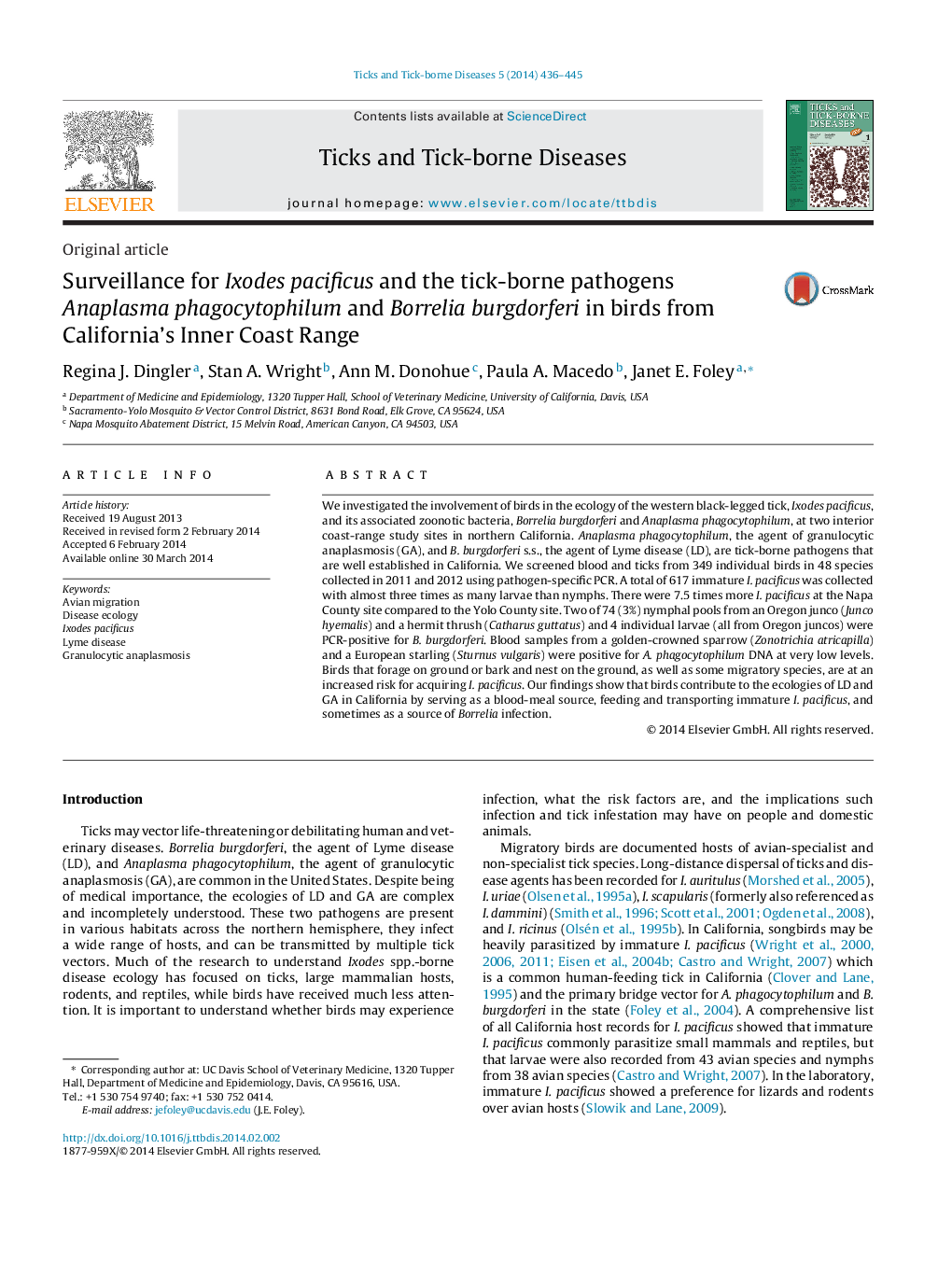| Article ID | Journal | Published Year | Pages | File Type |
|---|---|---|---|---|
| 5807329 | Ticks and Tick-borne Diseases | 2014 | 10 Pages |
We investigated the involvement of birds in the ecology of the western black-legged tick, Ixodes pacificus, and its associated zoonotic bacteria, Borrelia burgdorferi and Anaplasma phagocytophilum, at two interior coast-range study sites in northern California. Anaplasma phagocytophilum, the agent of granulocytic anaplasmosis (GA), and B. burgdorferi s.s., the agent of Lyme disease (LD), are tick-borne pathogens that are well established in California. We screened blood and ticks from 349 individual birds in 48 species collected in 2011 and 2012 using pathogen-specific PCR. A total of 617 immature I. pacificus was collected with almost three times as many larvae than nymphs. There were 7.5 times more I. pacificus at the Napa County site compared to the Yolo County site. Two of 74 (3%) nymphal pools from an Oregon junco (Junco hyemalis) and a hermit thrush (Catharus guttatus) and 4 individual larvae (all from Oregon juncos) were PCR-positive for B. burgdorferi. Blood samples from a golden-crowned sparrow (Zonotrichia atricapilla) and a European starling (Sturnus vulgaris) were positive for A. phagocytophilum DNA at very low levels. Birds that forage on ground or bark and nest on the ground, as well as some migratory species, are at an increased risk for acquiring I. pacificus. Our findings show that birds contribute to the ecologies of LD and GA in California by serving as a blood-meal source, feeding and transporting immature I. pacificus, and sometimes as a source of Borrelia infection.
